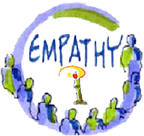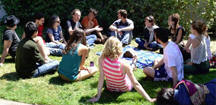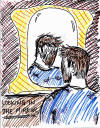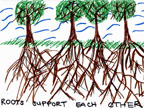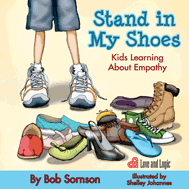|
|
|
Culture of Empathy Builder: Bob Sornson
Bob Sornson & Edwin Rutsch: How to Build a Culture of Empathy in Education
(transcription pending) (Video Transcriptions: If you would like to take empathic action and create a transcription of this video, check the volunteers page. The transcriptions will make it easier for other viewers to quickly see the content of this video.)
Bob Sornson, Early Learning Foundation
2. Build
consistent family routines. Find the routines which work for your
family, hopefully including: a consistent
morning routine bedtime
routine reading or
study time routine after school
routine regular
meals together as a family chores for the
family consistent
video limits bedtime 3. Talk to your
kids. Tell your stories so they learn to see the world from the
perspective of others. Help them learn to notice the lives of others.
Developing Empathy in the Classroom
1. Start by building a classroom culture in which students feel safe and secure. Students who are afraid of physical or emotional harm give attention to their own well-being, and have less ability to notice the well-being of others. 2. Classroom procedures and routines build a sense of predictable security for children. Well established routines also help students practice self-regulation skills as they learn how to wait calmly, recognize the behaviors that lead to positive outcomes in the classroom, and follow the steps to success. 3. Help students develop listening and observation skills by planning morning meetings, having discussions about what is going well and what needs to improve in our classroom, and teaching specific observation skills and listening which some children have not learned in the home. 4. Self-regulation skills are the foundation for empathy. By learning to calm themselves, regulate emotions, delay gratification, persevere, and stay focused on the right things, students develop the skills which allow them to look beyond themselves. Donít take self-regulation skills for granted. Find ways to purposefully help children develop these skills within the classroom. 5. Consider developing a clear set of expectations for how adults will treat students and how students will treat each other within the classroom. Making a commitment to treating each other with respect, and then learning to stand up and speak up for yourself and for others helps build a powerful sense of community (The Juice Box Bully, Bob Sornson, 2011). 6. Use great literature and tell great stories to inspire students to understand the experience of others. 7. Model empathy. Your students are watching! 8. Relationships matter. Empathy is the ability to understand how someone feels, but caring about others precedes giving effort to noticing the experience and feelings of others. Help kids build relationships which inspire them to trust and care for others.
|
||||||||||||
|
||||
